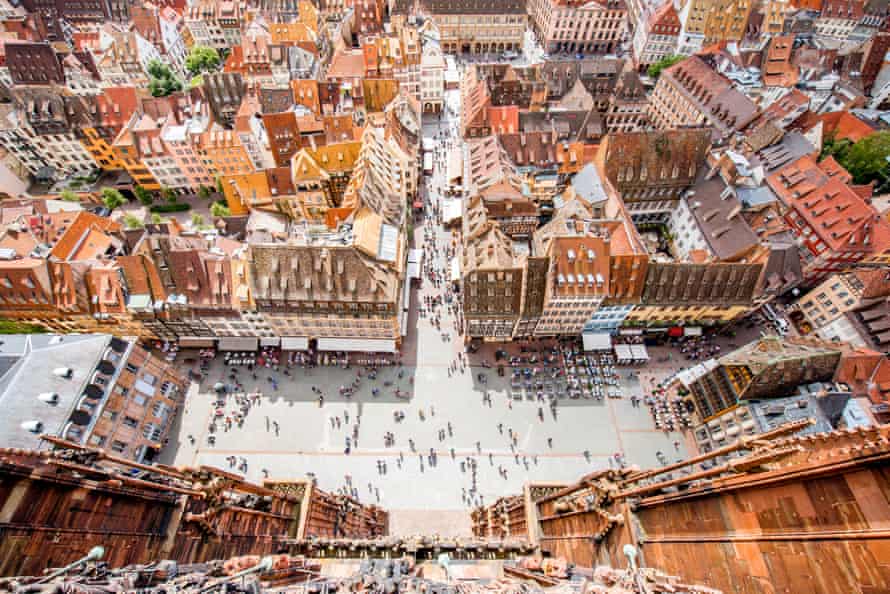
Talk about ageing well. The Interrail pass celebrates its 50th birthday this year, and its founding principle of sustainable travel and deeper connection, through joined-up train travel across Europe, couldn’t feel more in tune with the times. It also remains excellent value – while people still think of “interrailing” as a student activity, the passes have been available to anyone, regardless of age, since 1998.
For Brits like me, mourning their EU passports, it’s a surprise and a delight to discover that we are still welcome to participate in the scheme. Not only are Interrail passes still available post-Brexit, they even cover the Channel crossing from London on Eurostar on payment of a reservation fee. It’s for this reason that I decided to celebrate Interrail’s half-century with a grand tour for the 21st century.
I decided to dodge the traditional cultural headquarters of Paris, Florence and Vienna and used a one-month Interrail pass to seek out their 21st-century equivalents – the overlooked European cities where history dovetails with contemporary urban living; places to celebrate the best in Europe’s food, arts and thought today.
Over the course of the next six weeks, I will be offering a guide to some of the coolest European cities you can reach by rail right now, starting with an inspiring spot in eastern France.
Strasbourg
Tucked away on Alsace’s eastern border Alsace, Strasbourg pulls off the trick of being both quirkily regional and a beacon for post-national modernity. From the beguiling jumble of medieval buildings lining its canals to the wide, tree-lined avenues of the Neustadt, from Renaissance palaces to the Richard Rogers/Claude Buche-designed European court of human rights, this is a city whose architectural eclecticism tells the tale of the continent and maintains a hopeful vision of its future.
At its heart lies the Grande-Île, encircled by the River Ill and the canals built to bolster first its security and later its industry. You can cross the island by foot in 15 minutes, if you don’t get lost among its mazy alleyways. For orientation, the dark gothic spires of its 13th-century cathedral can often be spotted above the sloping roofs – the extravagantly carved tower is 142 metres high, and can be climbed for an epic view over the city.
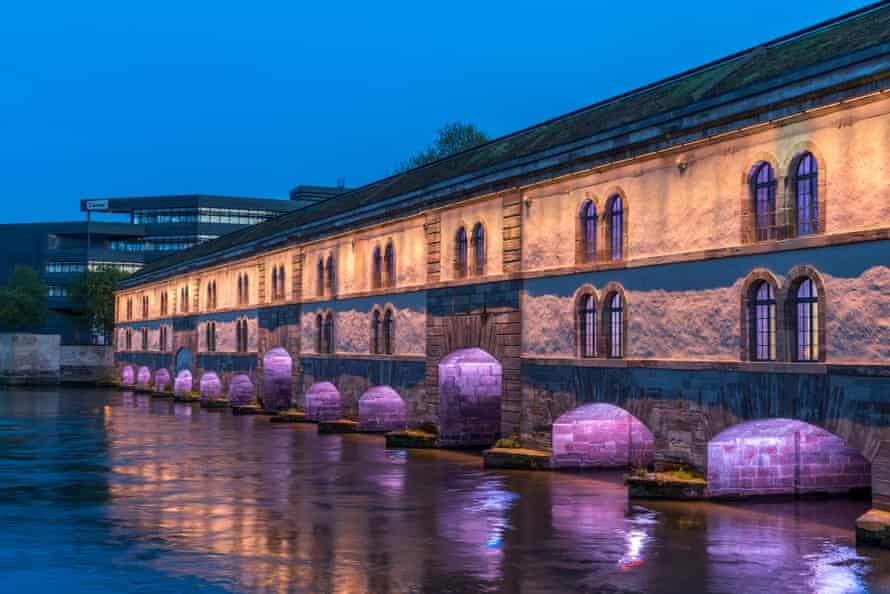
Strasbourg’s history radiates from its colourful centre outwards, and the street names, given in two languages, are a reminder of how often this land has changed hands between Germany (where it was originally part of the Holy Roman empire) and France. Bridges of various designs connect the Grande-Île to the even grander Neustadt, where German emperor Wilhelm I established the new town that doubled the population in the wake of the Franco-Prussian war in the late 19th century. Still, even here, amid the stone facades of the university the Kaiser built to help “Germanise” his new people, Strasbourg’s inability to pick a style and stick with it is very noticeable, be it the neo-classical library or the pretty Jugendstil facade of the nearby houses.
The student population here is the second-largest in France, and their presence adds to the vibrant atmosphere – it’s a miracle that a city with so many timber-framed buildings never feels twee. The bars and restaurants whose tables spill on to the pavements and squares range from gourmet burger joints to Michelin-starred gastronomy, while sleek-nosed trams snake past on the main streets; along with the buses, they keep traffic low, and cycle lanes shadow most major roads. The Grande-Île is a pedestrian paradise, from window-shopping the designer boutiques of Rue des Juifs to browsing the stalls at the Place Kléber, where regular markets run from farmers’ produce to secondhand books.
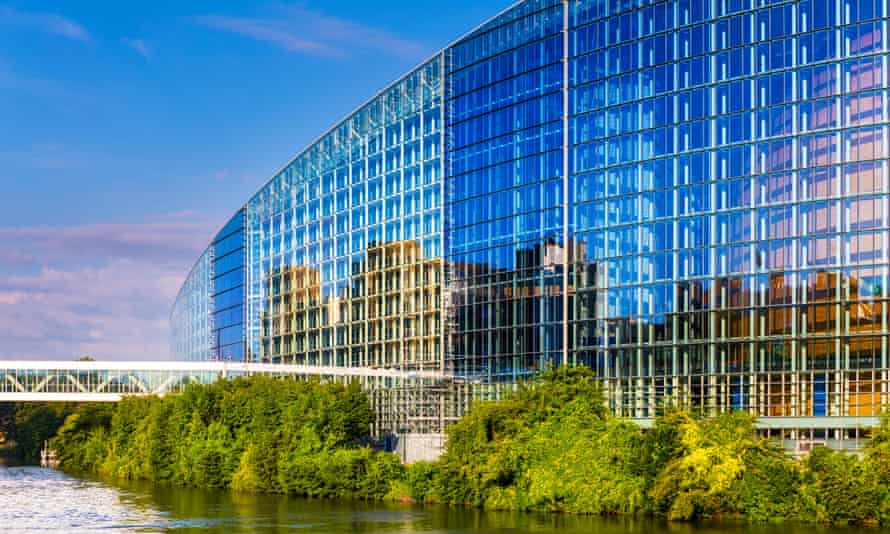
As the city expands to the north and the east, its character extends beyond its French-German heritage to embrace the postwar, borderless vision of the continent. In the Wacken quarter, the glittering glass sweep of the European parliament shimmers across the banks of the Ill, surrounded by institutions and embassies that host thousands of government officials from its 27 member states. Its less-lovely port region, meanwhile, is being reclaimed by eco-developments and co-operatives, spreading eastward towards the Rhine, where trams crossing a new bridge can whisk people to and from Kehl, Germany, in a few minutes.
Where to eat
Alsatians are justly proud of their cuisine, and traditional dishes are readily available in the winstubs – a cross between wine bar and family restaurant – that cluster at the centre of the Grande-Île, and permeate the canalside streets of Petite France in buildings where tanners, millers and fishermen once worked. There’s a particularly buoyant atmosphere at Winstub Le Clou, where the wood-panelled walls reverberate with chatter as diners enjoy their regional beef stew (baeckeoffe), or cream cheese (bibeleskäs). The famous flammekuechen – a cheese, onion and bacon (or vegetable) flatbread – is so popular it has spawned a chain of fast-food restaurants, Flam’s.
Be warned that the dishes at winstubs can be belly-busters, and are often meat-based. Les Chauvins, which opened in 2018, is the first restaurant to deliver traditional fare as a small-plate experience, and it’s a revelation. Chef Quentin Bangratz, along with his maître-d’ son Yannick, offer gastronomic, tapas-style versions of this usually hearty fare that put the delicate in “local delicacy”, from small slices of fleischschnacka – minced beef rolled in pasta – to a frothy cappuccino of the Rhine’s seasonal white asparagus.
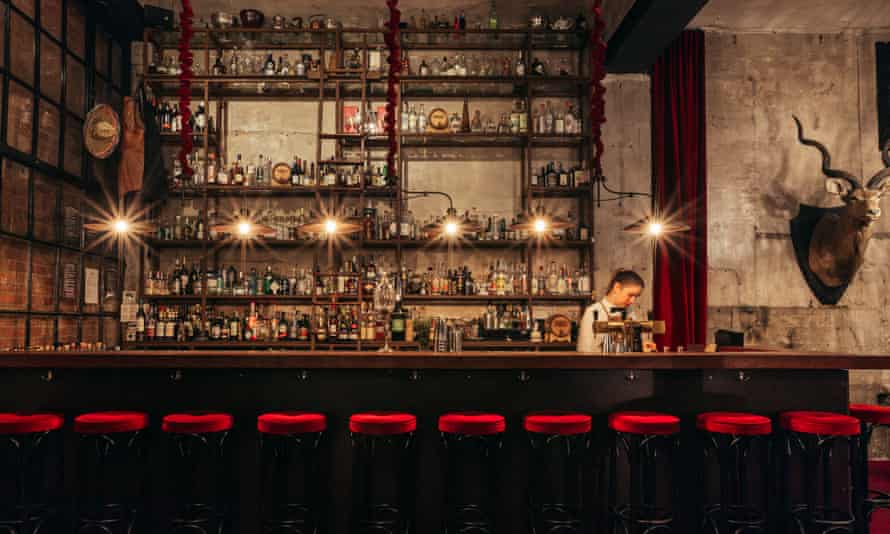
Meanwhile “bistronomic” restaurant La Hache has turned the region’s famed black pudding (boudin noir) into a mouthwatering sausage-and-mash, and its dining room by the old customs house is conveniently situated within 10 metres of a fine cocktail bar, should you require an aperitif or digestif. Le Douanier is owned by Suleyman Akbulut, who runs the bartending school that has helped to foster the city’s burgeoning mixology scene. For the full speakeasy experience, head to Aedaen Place, whose velvet couches and concrete walls lurk behind the kitchen of a pizza parlour – or for good vibes, try the Drunky Stork Social Club, which opened its spectacular elliptical bar last year on two floors of a bank that had lain derelict for three decades.
Culture
There’s an excellent example of how Strasbourg’s past and future live side by side at the Barrage Vauban, the 17th-century dam built to flood the city if it ever came under attack. The tunnel at the dam’s base is a strange repository of discarded and broken statues – and at its far end, monochrome manga-style murals herald the entrance to the 20-year-old Musée d’Art Moderne et Contemporain (Mamcs). A recent rethink of its permanent collection is an object lesson in making modern art accessible, with a ground floor that groups works thematically (The Body, The Brush Stroke), and studios in which visitors can experience Kandinsky’s colourfully tiled Music Room, then create their own audio-inspired composition.
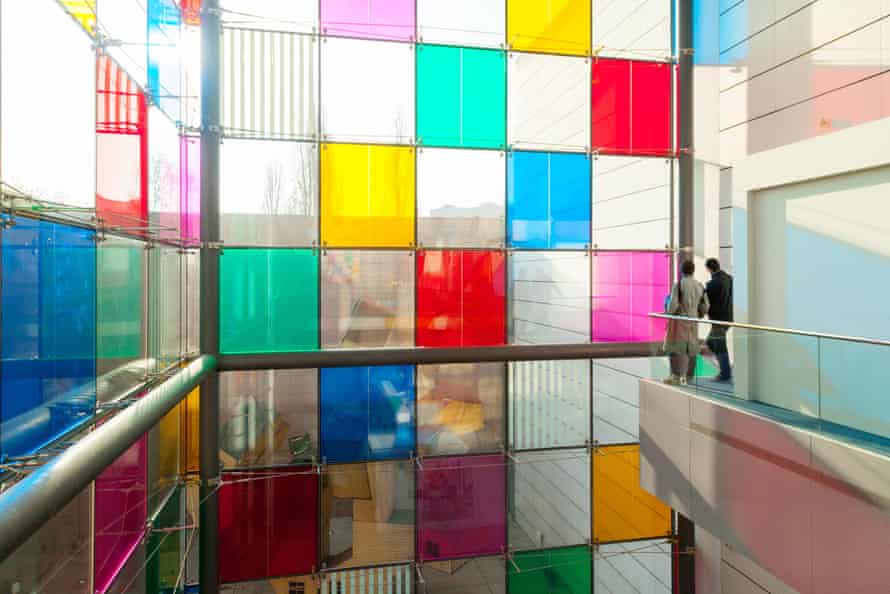
Together, the city’s museums offer a comprehensive view of a complicated history dating back to the Roman era. A gallery dedicated to Tomi Ungerer pays tribute to an Alsatian illustrator and satirist who is beloved for his children’s books. Classical music plays a major part in the city’s cultural life, thanks to its philharmonic orchestra, its Opéra National du Rhin, and its world-class conservatoire, while a wide-ranging programme of gigs, festivals and club nights can be found at La Laiterie, housed in a former dairy. Performances, at the Théâtre National de Strasbourg are largely in French, but a couple of fringe venues such as Théâtre de la Chouc’ specialise in performances in the Alsatian language, with subtitles.
Outdoor/neighbourhood
Parc de l’Orangerie has been around since the French Revolution, and its Joséphine pavilion (named for Napoleon’s Empress) was built to accommodate 140 orange trees confiscated by the Republicans from some of the local aristocracy. Just to the north-east of Neustadt, this welcome green space outside the crowded Grande-Île is easily reached by bus or bike; a ride on the more circuitous E-line tram offers excellent views of the European parliament building along the way. The park is worth a visit for the storks alone: arriving in September each year, they build their nests at the very tops of the trees, where they tend their young and gracefully preside over the 2,600 hectares (6,425 acres) of parkland.
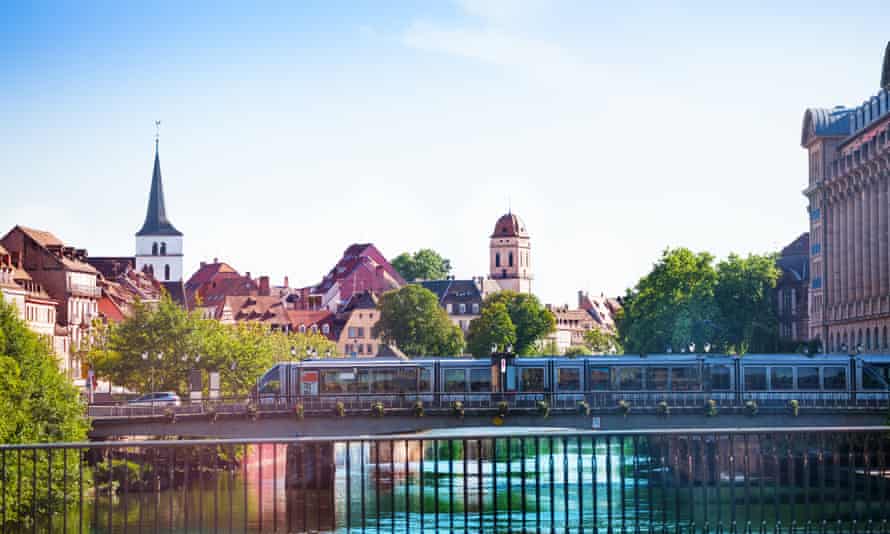
The walk back towards Neustadt goes through the consular district, with the flags and plaques on the large residences indicating all the countries represented in the European administration, and to the university’s botanical gardens. The strange sunken building at their edge is the (now abandoned) seismology department, the first of its kind on the continent; past the university library – its roof adorned with the figures of famous men of learning – is the newly restored art nouveau municipal baths.
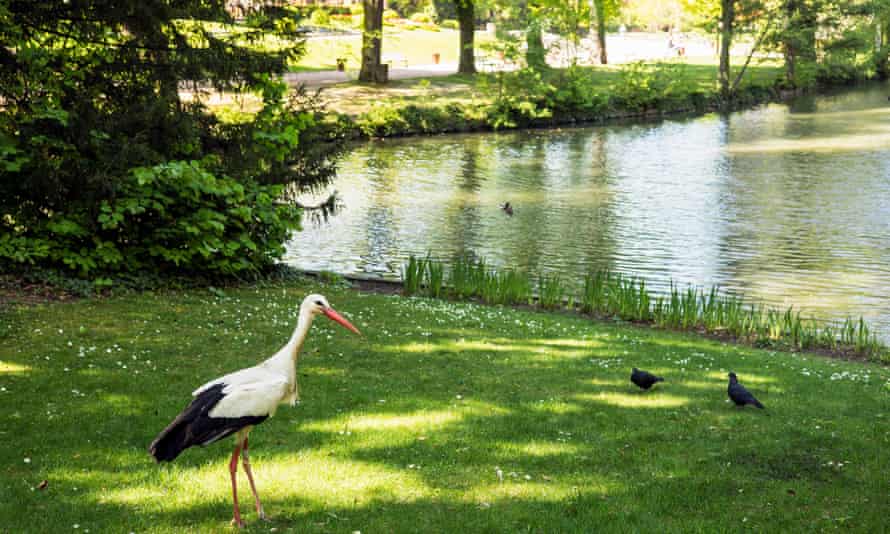
Where to stay
Opened at the end of 2021, the Hôtel Léonor (doubles from €111 room only) is a stylish fusion of Strasbourg’s past and present. The 19th-century facade just the beginning; behind it is a secret courtyard overlooked by an even more impressive building, the former mansion of Marshal Léonor, governor of Alsace. With interiors by French designer Jean-Philippe Nuel, and a restaurant overseen by two Michelin-starred chef Nicolas Stamm-Corby, the Léonor has already become a drinking and dining hotspot, an urban refuge beneath the shadow of the Saint Pierre-Le-Jeune church, which dates from early medieval times, and less than a minute from the canal.
Travel was provided by Eurostar from London St Pancras to Paris on an Interrail pass; prices start from €185 (interrail.eu/en). The trip was provided by Visit Strasbourg (visitstrasbourg.fr)



